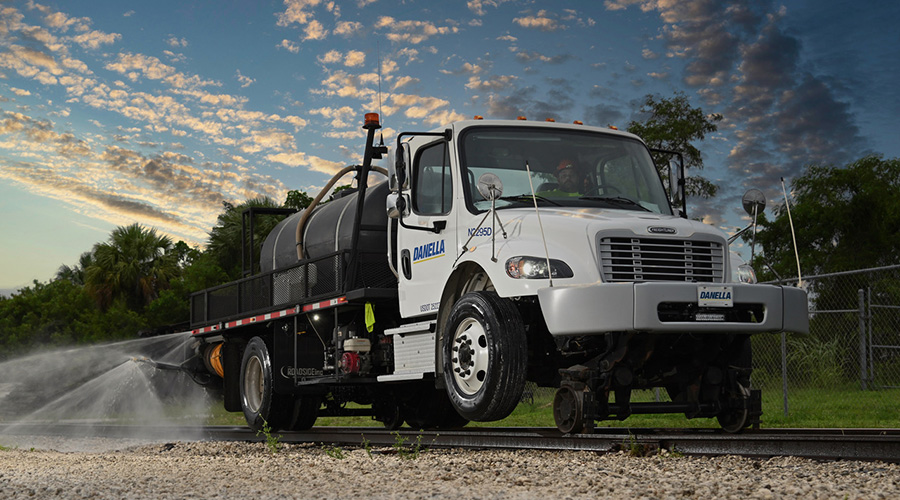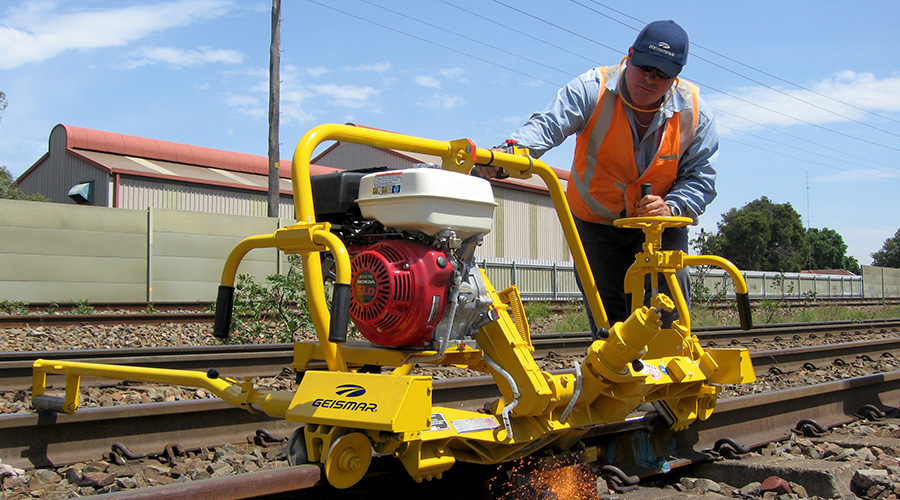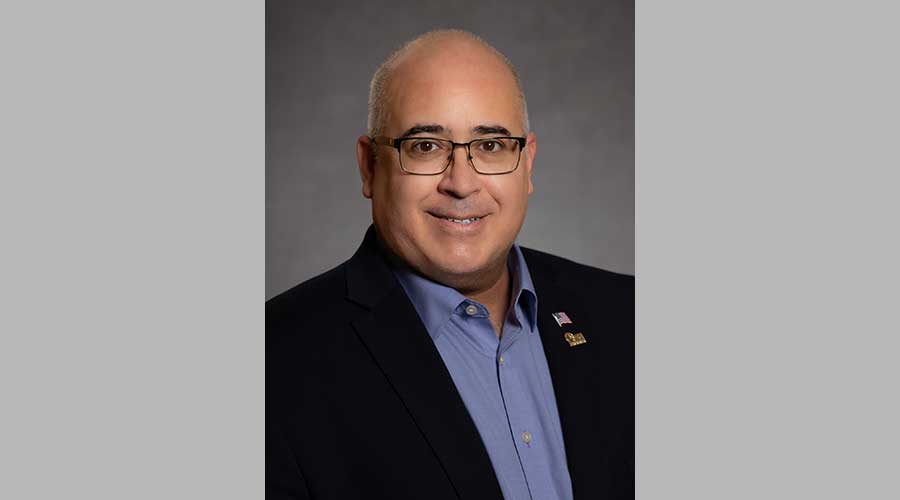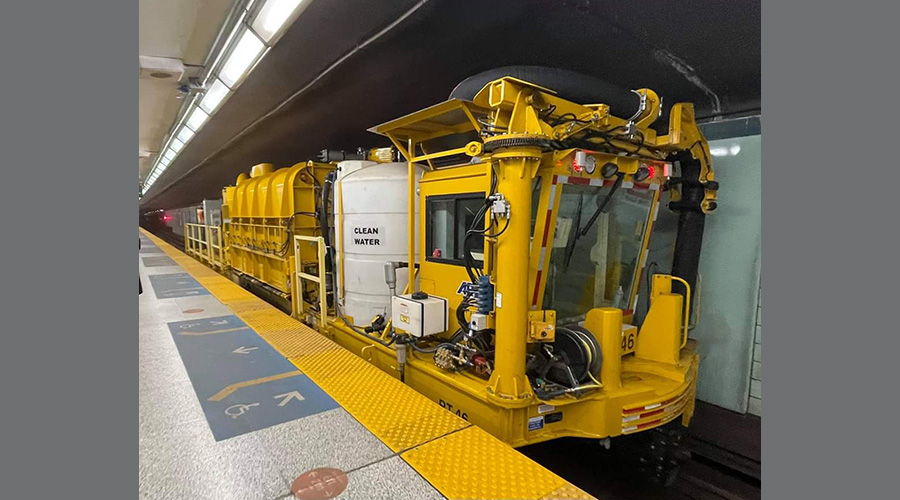Stay updated on news, articles and information for the rail industry
September 2007
Rail News: MOW
From the inside looking out
By Jeff Stagl, managing editor
Expansion and contraction apply to thermal dynamics. But the terms can be applied to railroad engineering departments, as well — at least in terms of workload and workforce size.
During the past five years, railroads have expanded their slate of engineering projects to keep up with system capacity and maintenance needs, while engineering staffs have contracted because of attrition.
Having to complete more maintenance-of-way projects in tighter timeframes and with fewer employees has prompted many railroads to take on fewer project design and other engineering duties in house, and hire more outside consultants.
That’s a far cry from the pre-merger, pre-Staggers Act and pre-new starts bonanza days of the 1970s, when freight and passenger railroads had large and experienced engineering and transportation workforces. They could handle maintenance-of-way projects and keep trains running without much help from consultants, most of whom didn’t offer a lot of rail expertise.
Today, many engineering firms have former railroaders with decades of experience on staff and offer a range of services, including design, environmental reviews and construction administration. The firms also can serve as a liaison between a railroad and project constituents, such as a municipality or government agency.
“We’re like the guy in a car lot — we’re agents for the railroad. And we let railroads focus on their core business,” says Roger Heebner, a former 20-year Conrail veteran and current national director of freight-rail marketing in the United States for engineering firm DMJM Harris/AECOM, which provides freight- and transit-rail engineering services.
In addition, engineering firms offer to mentor young railroad staff engineers who are replacing experienced workers as they retire. It’s difficult for railroads to recruit and train staffers because railroad engineering isn’t widely taught, engineering consultants say.
“There’s only one four-year program, and that’s at the University of Illinois. Some other colleges only touch on the subject,” says Tom Smithberger, senior vice president and national railroad director for HDR Inc., which operates 30 U.S. offices featuring rail groups that offer various engineering services. “We serve to supplement or act as an extension of a railroad’s staff.”
As long as railroads continue to face attrition and pursue projects to address capacity — from CSX Transportation’s $1 billion-plus system expansion and Los Angeles County Metropolitan Transportation Authority’s $900 million Gold Line extension to dozens of smaller light-rail and double-track segments — rail engineering department managers will keep outsourcing.
And engineering firms will welcome the influx of rail projects and a chance to develop a business relationship with railroads.
“I’ve been at this for 21 years, and the first 15, we were just trying to get our foot in the door,” says Mike McInnis, manager of railway engineering for HNTB Corp. “The more we work with railroads, the more comfortable we’ll get with each other, and we can show we can be more efficient.”
At HDR, rail engineering sales totaled more than $100 million in 2006 — an all-time high — and the figure likely will rise this year, says Smithberger. The firm is handling a number of track, bridge and facility projects, and conducting environmental work.
Taking it to the streets
HDR also is grabbing a share of streetcar projects, a growing segment of the passenger-rail engineering market. Earlier this year, the city of Cincinnati contracted the firm to conduct a streetcar feasibility study. The firm previously conducted a similar study for Atlanta Streetcar Inc. and last year won a contract to manage the city of Albuquerque’s streetcar project in New Mexico.
Other rail projects obtained this year include a transportation planning contract from New York’s Metropolitan Transportation Authority; preliminary engineering and environmental services pact from southern California’s San Bernardino County Associated Governments for a grade separation at Colton Crossing, where BNSF Railway Co. and Union Pacific Railroad trains meet; and an engineering services contract from the Port of Long Beach, Calif., for the $250 million Pier B rail-car storage and staging facility.
HDR also is designing UP’s Sunset Route double-track project. The Class I is spending $270 million this year to expand capacity on the 760-mile line running from L.A. to El Paso, Texas. By year’s end, the railroad expects to complete 57 miles of double track, bringing the Sunset Route’s total number of double-tracked miles to 434 — or 57 percent. Double tracking will continue in phases.
In addition, HDR is the lead engineering firm for the Dakota, Minnesota & Eastern Railroad Corp.’s $6 billion Powder River Basin (PRB) project, which calls for building a 262-mile line through western South Dakota and eastern Wyoming, and upgrading 600 track miles in South Dakota and Minnesota. Proposed for the past decade, the project might begin in 2008 if the railroad obtains private financing by year’s end.
Part of PRB project
HNTB also is providing design engineering services for a portion of the PRB project. The firm is handling track rehabilitation projects and designing one yard, says HNTB’s McInnis.
The company obtained several contracts earlier this year, as well. HNTB won an engineering and inspection services contract from the Florida Department of Transportation for the Miami Intermodal Center, a passenger-rail, bus and taxi transfer facility at Miami International Airport; a contract from the Kansas City Area Transportation Authority to conduct an alternatives analysis study, along with a team of consultants, for a proposed light-rail line; and, as part of the Northlink Transit Partners Joint Venture with Earth Tech and Jacobs Associates Engineers and Consultants, a $38.9 million final design contract from Sound Transit for the 3.15-mile University Link light-rail extension.
In addition, HNTB is providing CSXT various engineering services for its capacity expansion program. The firm is handling double-track and siding construction, and yard improvement projects in Alabama, Florida and Tennessee.
“We’re seeing more double-track projects, and more conceptual and final design work,” says McInnis.
On the double
Ditto for Wilson & Co. Inc., a Hanson-Wilson Inc. affiliate that offers freight- and passenger-rail engineering services. The firm is designing double-track projects, as well as new sidings and siding extensions, in the Southwest for a Class I, says Vice President John Yarbrough, who declined to identify the railroad.
Freight-rail business began to blossom in the mid- to late-1990s for Wilson & Co., as well as its competitors, as railroads merged and reduced staffs, says Yarbrough, who previously served a Class I in various capacities for 20 years.
“We saw the consultant field start to broaden and an influx in the use of consultants,” he says. “The last five years, railroads have had more profits and more engineering work is being done.”
Officials at Hatch Mott MacDonald have noticed one facet of freight-rail engineering work that’s been increasingly outsourced the past three years: signaling design.
Railroad signal department managers have become convinced about the quality of design service on the “safety sensitive infrastructure,” say officials at the firm, which provides engineering services for trackwork, structures, civil grading and earthwork, primarily for commercial intermodal and transload terminals, mainline capacity expansions and joint freight-passenger facilities.
In high gear
Hatch Mott MacDonald’s design portfolio also includes a growing number of ethanol and intermodal facilities, and a portion of a major high-speed rail project.
Earlier this year, the firm and joint venture partners URS Corp. and Arup won a preliminary engineering and environmental analysis contract for the California High Speed Rail Authority for the Fresno-to-Palmdale portion of the proposed 700-mile line. HNTB and DMJM Harris/AECOM won the contracts for the L.A.-to-San Diego and Sacramento-to-Fresno corridors, respectively.
Hatch Mott MacDonald is landing freight-rail capacity projects, too.
In 2004 and 2005, the firm designed projects associated with Canadian Pacific Railway’s capacity expansion program in western Canada. And recently, Hatch Mott MacDonald began providing Norfolk Southern Railway final design services for clearance projects along the Heartland Corridor, a $186 million double-stack container line the Class I and several public partners are building between Columbus, Ohio, and Norfolk, Va.
The projects, for which Hatch Mott MacDonald completed preliminary engineering in 2005, call for providing clearances in 30 tunnels and on 10 bridges along the route running through Virginia, West Virginia, eastern Kentucky and central Ohio.
In the tunnels, which date back to the late 1800s and early 1900s, and range in length from 170 to 3,300 feet, the firm will need to ensure clearances reach two to three feet through a combination of liner notching and removal, and roof lining replacement, Hatch Mott MacDonald officials say. The firm expects work on the first tunnel to begin this month.
One of Hatch Mott MacDonald’s California high-speed rail project partners is logging a growing number of freight- and passenger-rail engineering projects, as well. URS expects sales to reach $130 million in 2007.
“We’ve seen double-digit growth the past couple of years,” says Dave Dickey, the firm’s VP and manager-transit and railroads business line.
URS’ rail projects run the gamut from double track to sidings to streetcars to commuter- and light-rail trackwork.
A warm environment
The firm recently completed environmental work for BNSF’s triple-track project at southern California’s Cajon Pass. Construction, which began last month, got under way faster because the Class I outsourced the environmental portion of the work, says URS Senior Project Manager Rick Schroeder.
“We have environmental expertise railroads wouldn’t have,” he says. “We have offices in every state that have an environmental background.”
URS also provided engineering services for NS’ 5.3-mile line in the mountainous terrain of Indiana County, Penn. The line, which opened in spring, serves the Keystone Electrical Generating Station.
Currently, the firm is providing preliminary engineering for three CSXT projects associated with the Chicago Region Environmental and Transportation Efficiency or CREATE program: a 1.5-mile siding; modifications to an interlocking used by CSXT, UP and the Indiana Harbor Belt Railroad Co.; and a track connection for CSXT and Canadian National Railway Co.
In addition, URS is part of a team providing final design services for Virginia’s Hampton Roads Transit light-rail line, and recently won a contract from the Fort Worth Transportation Authority to develop an environmental impact statement and provide initial design for a 36-mile commuter-rail line linking southwest Fort Worth, Texas, the downtown area and north end of Dallas-Fort Worth International Airport.
An acquired taste
URS’ rail business will receive a large boost after the firm acquires Washington Group International Inc. for cash and stock totaling $2.6 billion. The companies reached an acquisition agreement in late May, but the transaction hadn’t closed as of press time.
For now, the Washington Group is working on the Metropolitan Transit Authority of Harris County, Texas’s transit-line extension. In May, the firm obtained a $77 million contract to provide project development, preliminary engineering and early construction services for the project, under which the agency will build 20 miles of light rail and bus rapid-transit lines.
The Washington Group might win another contract in the future to operate the line, says Joe Alexander, director of rail and transit for the firm’s mid-Atlantic Region.
“Transit systems are short of capital money and want private enterprise to finance, design, build, maintain and operate lines,” he says, mentioning the Regional Transportation District of Denver’s light-rail system expansion that’s proceeding under a public/private partnership and how the Washington Group has operated New Jersey Transit’s Hudson-Bergen line the past five years. “It’s prevalent in Europe and more cities will see this as a model.”
Value-added services
Parsons Brinckerhoff (PB) also is providing numerous services as one of three consultants working on Project 2025, Caltrain’s multi-billion-dollar capital improvement program. The firm is providing the agency design and construction, and operations and maintenance support services.
“It’s not, ‘Here’s your design,’” says PB Senior VP and Market Leader for Railroads Bruce Pohlot. “Our people work full-time in the client’s office and are doing tasks usually done by railroad people, such as program management for electrification and transportation management. They feel like they’ve become part of the Caltrain organization.”
Meanwhile, a railroad contracting firm is trying to regain its share of the rail engineering market. Balfour Beatty Rail Inc. is revamping its engineering department to provide design services for track, signals and electrical projects, says VP of Engineering Paul Scanlon.
“The companies Balfour previously acquired have gone through attrition in their engineering departments, and we want to build it back up,” he says. “We see a lot of opportunities with Class Is and short lines that are reinvesting in infrastructure and looking for a contractor to partner with. It’s the same with passenger railroads.”
Balfour Beatty is handling signal systems, electrification and communications work for L.A.’s multi-year Gold Line extension, and signal work for Massachusetts Bay Transportation Authority’s Greenbush line.
Opportunity knocks
The company also is handling trackwork for large industrial plants in Texas.
“Industrials are opportunities, as well, because they have signals and track on their property,” says Scanlon.
Engineering consultants will continue to seek opportunities to increase their rail business, and many railroads likely will oblige. Given their aging workforces and expanding project lists, railroads will need to continue following the outsourcing path in the near term.
In the meantime, engineering firms and their railroad clients have a golden opportunity to continue sharing and understanding each other’s inner workings and problems, says DMJM Harris/AECOM’s Heebner.
“The Class Is are still learning the business from our standpoint, and we’re trying to understand their culture and decision processes,” he says. “The relationship needs to be cultivated.” 


 LRW Honors Amtrak’s Acheson As Railway Woman Of The Year
LRW Honors Amtrak’s Acheson As Railway Woman Of The Year
 From Editor-In-Chief Foran: Of Gender Equity And Inclusion
From Editor-In-Chief Foran: Of Gender Equity And Inclusion
 Spotlight On Some Of Today’s Rail Safety Products
Spotlight On Some Of Today’s Rail Safety Products
 Women of Influence in Rail eBook
Women of Influence in Rail eBook
 railPrime
railPrime








